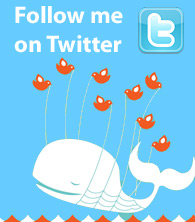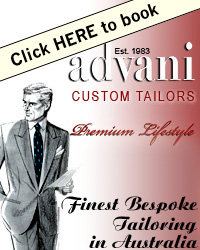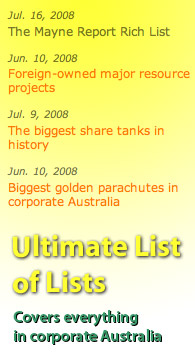Former listed companies where investors lost $100m+
January 14, 2025
Below is a list of almost 100 (87) former ASX listed companies where investors lost more than $100m overall. We're expecting this list will eventually top 200. Also, see this companion list looking at current listed companies with accumulated losses exceeding $100 million which haven't recovered that loss through a strong share price. Corrections and additions by email to stephen@maynereport.com or via Twitter to @maynereport.
ABC Learning, (7 years, 2001-2008): the childcare centre giant claimed to have net assets of $2.23 billion in February 2008 but subsequently collapsed. Its market cap peaked at more than $2 billion in 2007 after it initially raised $8 million in a 2001 float priced at $2. This was also the biggest loss for CBA in its history and even the Singapore government investment fund lost more than $300m. Between shareholders and lenders, more than $3 billion was lost.
Adelaide Steamship, (27 years, 1964-1991): the corporate raiding vehicle run by John Spalvins which overpaid for rival IEL in 1989 and went bust a couple of years later. Based on this detailed Wikipedia history it looks like it first floated in 1964. The banks didn't end up losing anything and charged loads of penalty interest. The $2.45 billion Woolworths float was the biggest asset sale in this managed work out run by David Crawford and David Ryan for many years.
Aeon Metals (AML): floated in May 2007 when it raised $12m at 25c. In the end it wanted to develop a cobalt deposit near Mt Isa but failed to reach agreement with the Waanyi people. Went into administration in 2024 and its final balance sheet showed accumulated losses of $63.4m and claimed net assets of $64m so total shareholder losses were around $127m.
Allco Finance Group, 2009: reported a $1.73 billion full-year loss for 2007-08 but this still left it with net assets of $545 million when the administrators were called in. Market cap peaked at more than $2 billion but it went too fast trying to emulate Macquarie's success and got finished off by the GFC with investors and lenders losing more than $3 billion across the empire which had establishment directors like Sir Rod Eddington and Bob Mansfield backing the late founder David Coe all the way.
Allco HIT: an Allco spin-off which suffered heavy GFC write-downs, the biggest in the Strategic Finance business due to large bad debts in New Zealand. In 2007-08 it plunged to a net loss of $322.2 million. This left total equity of $54 million and the receiver was called in on November 13, 2008.
Allegiance Coal (AHQ): collapsed in 2023 and its final balance sheet in February 2022 showed accumulated losses of $72.4m and claimed net equity of $82.4m although this was before it raised another circa $20m in equity later in 2022 so total shareholder losses were approaching $200 million. Came a cropper trying to build and run coal mines in jurisdictions including Colorado and Alabama.
Armour Energy (AJQ): collapsed in late 2023 and the final annual report disclosed a $21.6m loss in 2022-23, accumulated losses of $116m and claimed net assets of $42m suggesting that a total of around $150 million was lost by this outfit.
Arrium/Onesteel, (16 years, 2000-2016): demerged from BHP in October 2000 and went broke as the renamed Arrium in April 2016, almost 16 years later, after also taking over the separately listed Smorgon Steel. The final balance sheet before administration in February 2006 showed accumulated losses of $1.07 billion after a $1.5 billion statutory loss and $2.33 billion of claimed net assets so all up shareholders lost more than $3 billion.
Atlas Iron (AGO): taken over by Gina Rinehart in 2018 with equity holders receiving 4.6c or about $400m. The final balance sheet showed a loss of $163m which lifted accumulated losses to $2.08 billion and left net assets of $160m. Shareholders ultimately lost about $1.8 billion investing in this company.
Ausenco, (10 years, 2006-2016): the Brisbane-based resource engineering firm once chaired by former Queensland Premier Wayne Goss had a market cap above $1 billion when its shares peaked at $15, but it disappeared in a whimper in 2016, when private equity fund Resource Capital paid just 40c a share or $154 million in an agreed bid. It was floated at $1 a share in 2006 when it initially raised $26 million but did plenty of capital raisings along the way.
Austrim/Nylex, (14 years, 1995-2009): Kerry Stokes and Alan Jackson bought control from BTR Nylex in 1995 and went on a dizzying acquisition binge (including National Consolidated Industries) which saw the market capitalisation rise to above $1 billion and Jackson sell around $50m worth of stock near the top. It later crashed badly but Stokes never sold a share. See this comprehensive Crikey wrap after the heated 4 hour AGM in 2001. It finally collapsed in 2009 as Chris Webb noted in The Age. The final accounts in August 2008 showed accumulated losses of $596m and net assets of $88m, so investors lost almost $700m overall.
Babcock & Brown, 2009: collapsed in March 2009 but its last audited accounts were released in August 2008 and showed a $150 million half year profit and net assets of $2.63 billion. Market cap peaked at more than $5 billion but spread write across the full stable, investors and lenders dropped close to $10 billion and no one was ever charged with anything.
Babcock & Brown Power, (10 years, 2006-2016): floated at $2.50 a share in 2006 and briefly enjoyed a market capitalisation above $1 billion before the GFC struck and it grossly overpaid for some of the Alinta assets. Restructured and changed its name to Alinta Energy in 2009 and then restructured again in 2011 changing its name to Redbank Energy before finally delisting in 2016 with accumulate losses of around $1.6 billion.
BBI/Prime Infrastructure, (8 years, 2002-2010): initially floated as Prime Infrastructure Trust in 2002 Canadian firm Brookfield Asset Management took the old Babcock & Brown Infrastructure over in 2010 in what was billed as a $2.8 billion merger at the time. The Dalrymple Bay port assets were later refloated.
Becton Property Group: collapsed in early 2013 and final annual accounts for the 2011-12 year showed negative equity of $15.3 million after it wracked up $430 million in accumulated losses, mainly from over-paying for property assets both before and after the GFC.
Bell Group, (15 years, 1976-1991): the main investment vehicle of Robert Holmes a Court which was brought down by the 1987 share market crash, having paid Fairfax a ridiculous $475m for The AFR and the Macquarie Radio network at the top of the market. More than 1000 people attended its AGM held on December 9, 1987. The official loss was only declared in 2021 after a ridiculous 20 year legal fight between the banking syndicate, the WA Govt and the ATO. See delisted website.
Bell Resources, (6 years, 1984-1990): originally floated by Robert Holmes a Court as Wigmores then changed its name to Bell Resources in 1984 ahead of some frenetic takeover dealings, centred around BHP, until Alan Bond bought control and later stole most of its cash.
Billabong, (18 years, 2000-2018): taken over by US distressed debt outfit Oaktree in a $380 million bid in 2018 but its market capitalisation peaked at more than $1 billion shortly after its 2000 float. The final balance sheet in February 2018 disclosed $822 million in accumulated losses and net assets of $160m so with a $380m sale, the total losses for shareholders were around $600 million.
Boart Longyear, (18 years, 2007-2024): flipped and floated by Macquarie in 2007 when it took $2.35 billion from investors but still left a business loaded with $US642 million in debt. Was a disaster from the start after the GFC hit and ended up costing investors and lenders more than $5 billion before it was privatised by US private equity firm American Industrial Partners in a deal that valued the company at $543 million. See AFR report and takeover announcement.
Bond Corporation, (24 years, 1969-1993): initially floated by Alan Bond as WA Land in 1969 and then defaulted on its debts during the Keating recession and changed its name to Southern Equities before it delisted in 1993.
Bond Media, (3 years, 1987-1990): created by Alan Bond for his media assets at a float price of $1.55 but later went broke and was bought back by Kerry Packer and renamed PBL in 1990.
Brisconnections, (4 years, 2008-2012): the Macquarie created special vehicle for new Brisbane tollroads raised $1.26 billion in a float and still claimed to have net assets of $945 million when it collapsed in 2013 after the traffic forecasts fell massively short. The assets ended up with Transurban.
BWX: the branded natural products company took massive write-downs over a number of years including a $100 million loss in its final result in February 2023 when accumulated losses blew out to $392 million. Was delisted in April 2024.
Cabcharge (25 years, 1999-2024): founded by Reg Kermode in 1976 and floated in 1999. Relied heavily on government subsidies but the taxi company was eventually smashed by a combination of the ACCC, state governments which reduced its 10% surcharge on all taxi payments and Uber. Was renamed A2B Corporation in 2018 and then taken private by Singaporean company ComfortDelGro in 2024 for the equivalent of $2.30 per share or $182 million, by which time the business had shrunk to a fraction of its former glory. The share price peaked at more than $10 a share before the GFC.
Centaur Mining & Exploration: this Joe Gutnick mining company collapsed in May 2001 with $650 million in debts and the last annual report claimed it had net assets of $110 million. Total losses exceeded $500 million for shareholders and lenders.
Centro Property Group, (1985-2011): started out as Jennings Properties after a February 1985 float put together by Jennings Group. Later rebranded to Centro Property Group which spun out and managed the separate Centro Retail Trust. Came a cropper during the GFC after over-committing in the US and then the hard assets in Centro Retail became the core of a restructured Federation Centres, which later merged with Novion, so we're calling Centro Retail as the surviving entity with both Novion (the old CFS Retail) and Centro Property Group therefore appearing on this dead companies list. Wikipedia has a good summary of the complicated Centro debt restructure in 2011.
Ceramic Fuel Cells (CFU): the final result before it went broke was in August 2013 when it reported a $19.8m loss, accumulated losses of $276m and $15.7m of net assets which were subsequently worthless. See Wikipedia write-up.
City Pacific: collapsed in 2009 and reported a final loss of $74.3 million which left it with negative equity of $9 million and accumulated losses of $240 million. Former Liberal Party strongman Shane Stone was one of the directors.
Collection House: the Brisbane-based debt collection company declared a hefty $65 million loss in February 2022 so when it collapsed on June 30, 2022 there was no overly optimistic accounts hiding the problems but instead negative equity of $25 million after it wracked up $138 million in accumulated losses.
Commander Communications: after new CEO Amanda Lacaze took an axe to the balance sheet in February 2008, the net assets were only at $20.68 million by the time it collapsed six months later with accumulated losses of $211 million. The final auditor was RD Dring from PwC.
Copperco (CUO): the Queensland focused mining and exploration claimed to be worth $79.5 million in its final balance sheet before it collapsed in November 2008. The final result was a $5.2m profit but it did have accumulated losses of $101.4m so investors dropped almost $200m overall. Howard era Defence and Industry Minister John Moore AO was on the board which got hit by weak copper prices after getting the Lady Annie copper mine near Mt Isa into production. The mine has a copper processing facility in Mt Isa and the full operation was owned and operated by Chinese miner CST Mining Group, until it was offloaded in 2019 when the mine was largely depleted.
Decmil (DCG): initially floated in April 2004 when it raised $2.7m at 30c and the Perth-based civil and mining contractor was finally taken over by rival MacMahon Holdings in August 2024 at an enterprise value of $127 million. It went to the grave with accumulated losses of $246 million.
Eircom Holdings, (ERC): floated on the ASX in February 2005 as Babcock & Brown Capital after raising $800m at $5 a share and then changed its name to Eircom Holdings in 2009 reflecting its main business being control of the Irish telco. Was massively leveraged and eventually got taken over by STT Telecommunications at just 55c a share in late 2009.
Elmore Ltd (RLE): Perth-based company which formerly traded as IndiOre Ltd and went under in February 2024. Its last harrah was buying the operational Peko magnetite project in the NT for $30m in 2022. Final accounts showed accumulated losses of $117m and negative equity of $13m so investors lost just over $100m.
Estia Health (9 years, 2014-2023): originally floated in 2014 when it raised $725 million at $5.25 a share in a Quadrant driven private equity roll-up and flip. After woeful performance, it was then privatised by private equity firm Bain in 2023 in a deal which valued the equity at $3.20 a share or $828 million. Its market cap peaked at $1.4 billion in 2015-16 when the shares topped $7 but then crashed during COVID so this was a dud for public investors who endured the full 9 year public journey.
Forest Enterprises Australia (FEA): claimed to have retained earnings of $110m and net equity of $291m in August 2009 and then did an emergency $39.5m equity raise after this but was broke early in 2010 thanks to the forestry industry wipe out so total losses exceeded $300m. It had a big Tasmanian saw milling operation in Bell Bay and ran 17 forestry investment schemes across Australia which got hit when the ATO changed the rules.
Great Southern Plantations: the tax driven plantation timber company claimed to have net assets of $706.4 million when it collapsed after the GFC in 2009. It also had retained earnings of $205 million at the death.
Gunns, 2012: the Tasmanian timber giant reported a $904 million loss in 2011-12, led by a $750 million forestry write-down, which reduced net assets to just $24.2 million. Administrators were called in a few weeks later to a business which once had a market capitalisation of almost $2 billion.
Henry Walker Eltin (HWE): the mining contractor collapsed in 2005 with Leighton picking up most of the assets from the administrator. The final accounts for 2004-05 showed claimed net assets of $251m, $200m in contributed equity and $48m in retained earnings so the overall experience was a loss of more than $150m.
HIH Insurance, (19 years, 1992-2001): was floated in 1992 and then placed in liquidation on March 15, 2001 when it was still claiming to have net assets of $953 million. Market cap peaked at more than $1.5 billion.
Hills Industries: was delisted in 2023 for not paying its listing fees and the final balance sheet in February 2023 showed accumulated losses of $283 million, so all up around $300 million was lost by the famous maker of the Hills Hoist.
ION: the car parts company collapsed in late 2004, but the 2003-04 results claimed a net profit of $29.7 million and $297.1 million in net assets.
Isignthis, 2019: briefly had a market capitalisation above $1 billion before it was suspended by the ASX in October 2019, never to return. The last half year report before the suspension only showed $12.8m in net assets and $30.9m of accumulated losses but the bigger losses were incurred by largely retail investors who bought in at inflated prices and then found themselves holding worth less suspended shares.
Isoft: an IT health provider which originally traded as IDT and was eventually taken over for 17c a share or $182 million (excluding $200m bank debt) in 2011 after wracking up accumulated losses of $459 million. The last balance sheet claimed it had net assets of $170m.
Kagara Zinc: the stock peaked at $7.60 in September 2006, but it went into administration in 2012 at a time when it claimed to have net assets of $478 million.
Kalium Lakes (KAL): a potash and salt mining outfit chaired by former WA Liberal Minister Cheryl Edwards AO which appointed receivers in August 2023 and last reported in February 2023 when it claimed to have net assets of $93.3 million after accumulating $190.6 million in losses. Federal taxpayers look to have lost $83 million through the Northern Australia Infrastructure Fund (NAIF).
Living and Leisure Australia (LLA): owned the Melbourne Aquarium and other tourism assets and was taken over by UK firm Merlin for $140m in 2012. The final accounts showed accumulated losses of $103m and claimed net assets of $135m so the overall losses were about $100m.
Link Group, (9 years, 2015-2024) Japanese giant Mitsubishi agreed to pay $2.16 per share or $2.1 billion in enterprise terms after years of poor performance, much of which was associated with its UK division. The share registry and investor services business was floated at $6.37 per share in October 2015. However, when you add back the performance of PEXA, which was spun off in 2021, the performance wasn't as bad.
Livetiles (LVT): the HR platform called in the receivers in December 2023 after wracking up $186m of accumulated losses, but still claimed to have $34.8 million of net assets after reporting a $24.7m net loss in 2022-23.
LNG: Sydney head quartered company which collapsed in early 2020 claiming to have net assets of $18.3 million after accumulating $452 million in total losses trying to develop the Magnolia LNG export terminal in Louisiana.
Looksmart (LOK): the once high flying tech stock that managed internet listings never really recovered from losing its major Microsoft contract and eventually chose to delist from the ASX in 2007 with accumulated losses of $US217m, claimed net assets of $US72.5m and paid up capital of $US274 million.
Marlay Spoon (6 years, 2028-2024): the German-based packaged meals company floated on the ASX in July 2018 after raising $70 million at $1.42 per share? Did a large number of capital raisings and eventually delisted from the ASX in July 2024. See this write up on the disaster for Intelligent Investor.
McAleese (MCS): transport company started by former Toll and Asciano Rich Lister Mark Rowsthorn but it hit the rocks after accidents and safety problems. The final result was a $97.4m loss for December 2015 half year and the final balance sheet released in February 2016 showed accumulated losses of $208m and net assets of $39.8m so when it went under later that year total losses were in the order of $250m.
Metgasco (MEL): Floated in late 2004 after raising $5m at $20c and was still listed 20 years later staggering along with $112m of accumulated losses by March 2024 after blowing most of its money failing to get fracking up in NSW. Is now exploring in the Cooper Basin.
MFS/Octaviar, 2009: plunged to a belated $242 million loss for the half to December 31, 2007 after writing down the MFS Pacific Finance division by $246 million but this still left it claiming to have $1.22 billion in net assets. The market cap peaked at more than $1.5 billion before it collapsed in 2009.
Mighty Craft (MCL): the boutique brewer listed in 2019 when it raised $17.5m at 50c and collapsed in July 2024 with its last half year accounts putting paid up capital at $109 million, all of which has been lost. The AFR reported that debts and creditors were at $40 million.
Monarch Gold: Michael Kiernan's mining outfit collapsed in 2008 when it was claiming to have $58.45 million in net assets after wracking up $65m in accumulated losses meaning all of the $119m in contributed capital was lost.
Newsat (NWT): the wannabe satellite company collapsed in 2015 and its final accounts for December 31, 2014 showed a $39.7m loss, accumulated losses of $135m and claimed net assets of $203 million, meaning shareholders dropped more than $300m overall.
Nexus Energy (NXS): oil company which was bought from shareholders for virtually nothing by Seven Group in 2015. The final balance sheet in 2014 showed accumulated losses of $538m and net assets of $159m after a $150m loss so all up investors dropped north of $600 million.
One-tel, (4 years, 1997-2001): collapsed in 2001 with audited net assets of $945 million despite never declaring a profit. Market cap peaked at more than $2 billion on irrational exuberance after the Murdoch and Packer families backed the company but weren't prepared to sustain the huge losses needed to seriously compete as a telco network owner, as opposed to just being a marketing focused re-seller.
Pacific Brands, (12 years, 2004-2016): raised $1.3 billion at $2.50 a share in a 2004 IPO and was bought by US clothing company Hanes Brands when it offered $1.1 billion or $1.15 a share in 2016.
Panoramic Resources (PAN): called in the voluntary administrators on December 14, 2023. They're final accounts claimed net assets of $142 million after chalking up $236m in accumulated losses. There were 11,000 retail shareholders in the Perth-based company when it died having taken a total of $376m from investors. Where did all that money go? Mainly into the Savannah nickel project in the Kimberley region.
Pasminco, (12 years, 1988-2000): declared a $23 million net profit for 1999-00 and then collapsed shortly after, still claiming to have net assets of $1.5 billion. Market cap peaked at more than $2 billion.
PMP/Ovato, (31 years, 1991-2022): the magazine and printing business and was floated by News Corp in November 1991 and briefly had a market cap above $1 billion before eventually changing its name to Ovato and collapsing in July 2022.
Prime Media (PRT): the former regional television operator sold its main assets to Seven West Media in 2022 and was delisted in January 2024 carrying $273m in accumulated losses.
Prime Retirement and Aged Care Property Trust (PTN): collapsed in 2010 and the final accounts for December 31, 2009 showed a $12m loss and claimed net assets of $264m. There was $481m of contributed equity which was all lost and ASIC ran a case for years against the directors who included Liberal Party figures Michael Wooldridge and Peter Clarke. The main player responsible for the loss was Bill Lewski and the battles over the debacle were still running 10 years later in 2021.
Quintis: the Perth-based sandalwood company reported a $416 million full year loss in 2016-17, but this still left it claiming to have net assets worth $317 million at the time when administrators were called in on January 22, 2018.
Range International (RAN): They took on Brambles & manufacture plastic pallets in Indonesia but had $129m of accumulated losses, according to this last balance sheet, when the ASX delisted them in August 2024 for non-payment of listing fees.
RCR Tomlinson: final full year result from the construction outfit was a loss of $16 million but the company raised $100 million in fresh equity after declaring it was worth $380 million before it went broke in late 2018 so you could argue that claimed assets at the time of collapse were really $480 million.
Record Realty (RRT): a heavily geared investment vehicle in commercial properties, mainly office towers, which Allco took over the management of in 2005. The final result was a $253m loss in 2007-08 which left it with accumulated losses of $185 million. When it collapsed in 2009 it claimed to have net assets of $131 million, so equity investors dropped more than $300m before considering lender losses. These were led by Bank of Scotland which appointed the administrators and itself had to be nationalised by the UK government after the GFC.
Redflow: Queensland-based battery company which appointed administrators in August 2024. The final
half year in February 2024 was a $13m loss for the half and the final balance sheet showed $163m in accumulated
losses and only $7.4m in net assets to they've blown up $170m and never got
across the valley of death.
Regional Express (REX): the regional airline collapsed in July 2024 with the last balance sheet claiming it had $154 million in net equity, AFTER considering its circa $250 million in debt.
Resource Generation (RES): The aspiring developer of a South African coal mine claimed to have $101m in net equity in these final results in March 2021 before collapsing with accumulated losses of $85 million so the total losses for investors were almost $200 million. There have been dozens of Australian listed companies which have failed trying to develop new mines in Africa. The Boikarabelo coal mine proposal never made it to production.
Rubicon America Trust (RAT): the Allco managed property investor in the US declared a huge $587 million loss in February 2009 shortly before it collapsed with negative equity of $143 million.
Rubicon Europe: a big loss slashed its claimed net assets from $537 million to $298.2 million in the 2007-08 balance sheet, but the listed and heavily geared property investor was suspended in November 2008 and then collapsed in 2009.
Sihayo Gold (SIH): the Indonesia-focused gold explored delisted in August 2024 after a takeover from its biggest shareholder which valued the company at $27.5 million. But with $148m in accumulated losses and claimed net equity of just $16.4m in the final accounts, shareholders have dropped more than $120 million.
Slater and Gordon, (16 years, 2007-2023): never officially collapsed as was rescued in a scheme of arrangement but the final full year result was a $546.8 million loss in 2016-17 and this followed a $1.017 billion loss in 2015-16. Did a massive debt for equity swap to stay listed before Allegro privatised it in 2023 at just 55c a share. The final results showed it carried $1.25 billion in accumulated losses.
Smorgon Steel, (8 years, 1999-2007): floated in the mid-1990s when the family imploded and then taken over by One Steel in 2007 in a deal valued at $1.16 billion. Name was later changed to Arrium, which went broke.
Solution 6, 2004: was capitalised at more than $1 billion when the tech darling saw its shares peak at around $17 before the 2000 tech crash, but Dick Pratt was one of the only winners selling his stake for a profit of more than $100 million. Later merged with Sausage Software and then was swallowed by MYOB for $233m or 92c a share in 2004.
Sons of Gwalia: the Perth-based gold miner collapsed in 2003 claiming to still have $728 million in net assets when it fell over. Somehow reported a $12.23 million profit for the 6 months to December 2003 which lifted retained earnings to $170m when this balance sheet claimed net assets of $728 million. Was in administration just a few months later showing how volatile mining companies can be when exposed to gyrating commodity and precious metals prices.
Tamaya Resources (TMR): collapsed in 2008 and final balance sheet in August 2008 showed $148m in accumulated losses and $39.6m in claimed net assets so total losses approached $200m. Failed to get mining projects up in Portugal and Armenia and didn't make enough money from its Chilean copper mine to offset this.
Ten Network Holdings, (19 years,1998-2017): Canadian firm Canwest lead a consortium that bought it out of liquidation in 1992 and then after much fighting with Canberra over foreign ownership, it floated in 1998 with a $374 million offer priced at $2.15. It declared a final $231 million loss for the half year to March 30, 2017, and then administrators were appointed in June 2017 when it was still claiming to have net assets of $152 million. Market cap peaked at more than $2 billion.
Timbercorp: the tax-driven plantation timber giant collapsed in 2009 claiming to have net assets of $595.6 million. The final full year result was a $44.6 million profit in the year to September 30, 2008.
Troy Resources (TRY): see last results from February 2022 detailing a whopping $457 million in accumulated losses. Was delisted on September 1, 2023.
Uecomm, (4 years, 2000-2004) (UEC): the fibre infrastructure play floated in September 2000 just before the 2001 tech wreck when it raised $363m at $2.20 a share with United Energy retaining a 67% stake, as Brett Clegg explained in this AFR piece at the time. Then, Singtel Optus privatised the business with a 40c per share bid in 2004 which valued the equity at $226 million. The final balance sheet showed $168m of accumulated losses and claimed net assets of $124m, which doesn't quite add up given the float price.
Virgin Australia, (18 years, 2002-2020): initially floated by Richard Branson as Virgin Blue after the 2001 Ansett collapse and its final result for the half year to December 31, 2019, was a net loss of $104.8 million which left the business with negative net assets of $1.6 billion. The market cap peaked at more than $1 billion when it was making more than $200 million a year. Private equity firm Bain bought it out of administration in 2020-21 for more than $3 billion and is looking to refloat the business in 2025.
Windimurra Vanadium: receivers were appointed in February 2009 with claimed net assets of $196 million in the 2007-08 annual report. These days, the project is on care and maintenance although the current owners claim it has had $700m of investment and is "well positioned to become the world's next major vanadium producer". A big problem is the location in the middle of nowhere, 670kms north of Perth but almost 500kms inland from Geraldton.
Copyright © 2025 The Mayne Report. All rights reserved






















